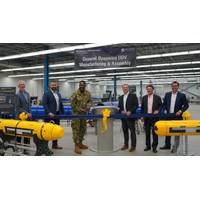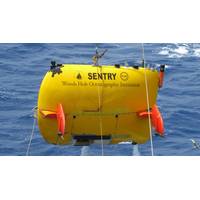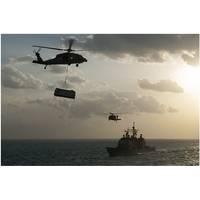
General Dynamics Mission Systems Opens New UUV Manufacturing Site
provide an array of underwater sensor capabilities for defense, commercial and scientific customers worldwide.The UUV center of excellence will utilize a portion of Taunton’s 500,000+ square feet facility. In addition to the UUV center of excellence, the Taunton facility develops several communications capabilities for the U.S. Army as well as provides engineering, manufacturing and production support for many General Dynamics Mission Systems programs.“Opening this manufacturing and assembly facility allows us to leverage the highly skilled and extremely experienced Taunton workforce. This
REP16: a Global At-sea Campaign
underwater digital communication protocol, developed at CMRE, which is in the process of becoming a NATO standard and is currently being promoted in the maritime industry. Through REP16-Atlantic, all the partners will enable collaborative research to increase interoperability and underwater communications capabilities, automation and cooperation of unmanned underwater, surface and aerial vehicles. REP16-Atlantic also marks the first international research campaign of the NATO Research Vessel Alliance after the new flag agreement with the Italian Navy. The REP16-Atlantic features and objectives

Big Data, 3D Printing and Robots
front-line users who will best determine what works for the Marines, and what doesn’t. “We have an active duty Marine Corps unit where we’re going to give these Marines some of these capabilities—like small unmanned air systems with cameras and sensors, certain communications capabilities, certain mobility capabilities—and let them go out and tell us if they have utility or not, give them operational advantage or create a logistical burden,” he said. Any new technologies will need to be reliable and mobile, he emphasized. “At the end

WHOI Helps Locate El Faro’s Voyage Data Recorder
South Carolina, April 18, and reached the wreck site on Thursday, April 21. The expedition involved coordination across various government agencies including the NTSB, the Coast Guard, the Navy, and the National Science Foundation. Data collected by the vehicles were sent ashore using advanced communications capabilities aboard the ship. NTSB, WHOI and members from the Naval Oceanographic Office were able to review the data in near real-time and provide the team at sea with helpful guidance. The ship-to-shore collaboration facilitated by RV Atlantis’s telepresence link will continue to ensure the

Making Sailors 'SAFFiR'
human in the loop to allow an operator to intervene in any type of task that the robot's doing," Lattimer said. McKenna plans to sponsor a more advanced design as part of the long-term investigational research program. Blueprints include equipping the robot with enhanced intelligence, communications capabilities, speed, computing power and battery life for extended applications. "We have taken a look at other kinds of sensors that you can put on these robots," he said. "For instance, a bipedal robot could be configured to take shipboard measurements, scan for corrosion and leaks

Middle East Maritime Security: Cooperation is the Key Vital
sea to communicate via chat and pass data and plans via email. Although some special equipment may need to be installed—and depending on the level of classification, the U.S. may provide personnel to partner navies to operate the equipment—but generally CENTRIX permits secure communications capabilities while sharing a common operational picture of ship locations, especially helpful in coordinating multi-national counter-piracy missions.
Liquid Robotics CEO Weigh in Before House Subcommittee
lots of money, make you very efficient and more effective on the ocean.” Among its many applications, Wave Glider technology can be used as a gateway platform to facilitate sub-sea to surface to aerial to satellite communications, due to its long duration, sensor and real time communications capabilities. Wave Glider autonomous surface vehicles are able to remain at sea for months or even years at a time (no fuel or crew required) since they tap into the infinite energy supplied by waves and sun. And because Wave Gliders can operate effectively in the most severe hurricane force weather



 February 2024
February 2024





